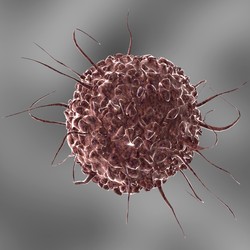Tumour microenvironment promotes cancer drug resistance
Targeting oncogenic kinases such as ABL, BRAF and EGFR now constitutes anti-cancer therapy. However, these drugs are only efficacious against tumours with matching oncogenic mutations until genetically resistant cancer cells emerge. In the case of EGFR, these cells are present even before treatment and have a strong selective advantage during therapy. Scientists in the EU-funded study IMAGEMELTHERAPYLRI (Single cell level intravital imaging of response, tolerance, and resistance to targeted therapies) set out to investigate the emergence of resistance in BRAF mutant melanoma treated with BRAF inhibitors. Given the variability in the initial response to BRAF inhibition and the absence of resistant cells before therapy, researchers believe that non-cell autonomous mechanisms involving the tumour microenvironment may drive resistance. To comprehend how the genetically stable stroma could promote the emergence of BRAF treatment-resistant melanoma, scientists employed intravital imaging techniques and ‘Fluorescence resonance energy transfer’ (FRET) microscopy. They observed that following an initial period of response to treatment, melanoma-associated fibroblasts exhibited a reactivation of the ERK/MAPK pathway. In turn, this led to matrix protein production and tissue remodelling that provided tolerance to the BRAF inhibitor in melanoma cells. When they abolished ERK pathway reactivation, they obtained a more effective control of BRAF-mutant melanoma. Study findings indicate that melanoma-associated fibroblasts provide a safe haven for melanoma cells to tolerate BRAF inhibition, facilitating the emergence of genetically resistant cancer cells. The work carried out during the IMAGEMELTHERAPYLRI project highlighted the need to consider how targeted anti-cancer therapies affect the tumour microenvironment. Furthermore, it suggested that co-targeting of the tumour microenvironment might augment cancer therapy and improve its outcome.
Keywords
Microenvironment, cancer, drug resistance, BRAF, melanoma, ERK pathway







